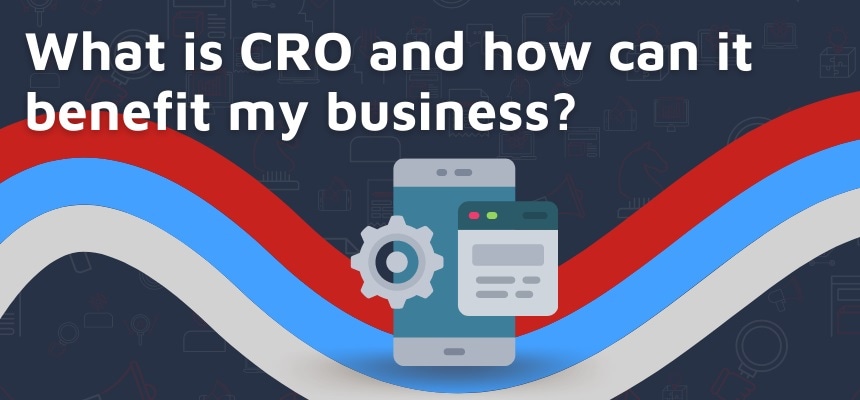
Getting the most from your website traffic is a constant battle for scientific marketers. Conversion rate optimisation or CRO might not be a term you are familiar with in your day-to-day role, but it is this process that is going to help you generate more conversions for your organisation.
Higher conversion rates means a better return on your marketing investment and should lead to more leads, sales and revenue.
What is conversion rate optimisation (CRO)?
Your conversion rate can be calculated using the formula below.

Conversion rate optimisation or CRO is the process of taking as many site visitors to a desired goal or outcome (that supports your marketing strategy) as possible.
How CRO can benefit your business
As a basic example, let's say we know that your ‘Request a Quote’ CTA drives an average of $1000 of revenue per month from a 10% conversion rate.
Increasing that to just 15% is going to have a hugely positive impact on the number leads, sales and revenue generated.
CRO example: At the start of the year we introduced a Hello Bar on the top of our website (see below) and since then it has been responsible for 10% of all eBook downloads.
.jpg)
How can marketers in science implement conversion rate optimisation?
We will use 'Call to Action' (CTA) buttons as an example.
The position, colour, copy and size are often based on website themes or decided by gut feel, but in this example we will highlight how you can test those buttons to see what drives the most conversions.
- What conversions are you looking to optimise?
For this example, we are looking to see how the position of CTA buttons impacts the number of form completions.
- What are you currently doing and what are the results?
Before running any CRO tests be sure to have a good understanding of what you are currently doing: what results you are getting and what is driving those results. This data should be accessible in your Google analytics or AZoIntel accounts.
- Develop an alternative hypothesis
You may want to test the colour or position of your call to actions. This example below tested how the position and frequency of the CTAs impacted conversions.
- Put your hypothesis to the test
We then ran tests by showing the original CTA layout to a number of site visitors and 3 beta versions to the other site visitors. Each version had between 684 and 782 experimental sessions.
Letting the test run for 2 – 4 weeks should provide a good clear picture of whether one solution is better than the other and provide you with data that you can present to your senior management to support any changes you want to implement.

- A CTA button between every two products has provided the biggest conversion here. So more buttons = more clicks.

- The session with the most clicks is quite even with the ‘full banner placed between product 4 & 5’ in terms of engagement stats.

- However, the variant with the highest conversion of clicks through to the products didn’t result in any form submissions. Whereas the ‘full banner between 4 & 5’ did.
Our suggestion for this example would be to add the variant ‘Full Banner between product 4 & 5’ as while the click through conversions were lower it did have a very similar bounce rate and also resulted in form submissions.
When to implement CRO at your science organisation?
As soon as you want to start converting more site visitors into leads. A/B testing different aspects of your website will enable you to make data driven decisions that allow you to get better results from your marketing efforts.
You can also implement CRO as part of your website (re)development to ensure that the changes you make don’t negatively impact your current conversions.
Do CRO and Search Engine Optimisation (SEO) work together?
In a word, yes. SEO is the process of optimising content for search engines so that you can drive appropriate visitors to your site content. CRO is the process of converting more of those visitors to leads, sign-ups and sales etc.
So yes they do work together but unlike SEO, which is a long-term strategy CRO can be implemented as a one off test or as a series of tests over a period of time.
Conclusion
If you want to start converting more of your site visitors into leads or just find out more about CRO then contact our team today for a free consultation.